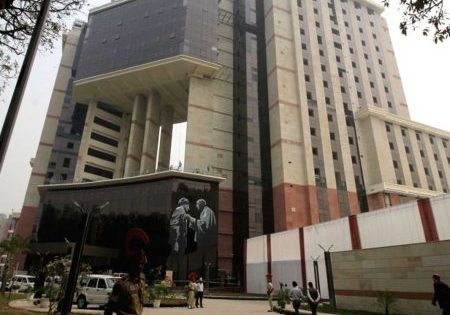The Future of VT Sales in India
Feb 21, 2023

A study of VT sales professionals provides major insights.
The world went online when the COVID-19 pandemic hit. Business, board, customer and staff meetings, internal chats with the team, trainings, workshops — anything that was previously done in person was forced onto a digital platform. Vertical-transportation (VT) sales were no exception. The new remote-sales environment presented challenges, yet it achieved a surprising degree of success. Now the future state of VT sales is evolving at a rapid rate — and will only continue to do so. Customers have become savvier and are demanding more, sales are increasingly becoming digital and operating models more hybrid.
In the context of decoding the future of VT sales, the current environment only adds to the continuous need for change. The situation is challenging, yet exciting; some VT companies are using the macroeconomic environment to their advantage to leapfrog competition. VT companies are seizing the opportunity and taking action — with great success.
As part of a study, 20-odd persons directly dealing with the sale of elevators and escalators were contacted in an unstructured market survey to find out their opinions on the futures of VT sales. Analysis of these opinions and views provided during the discussion lead us to the following major insights:
1. The channel of direct selling in the VT market was good, but now hybrid is the new standard: It offers powerful opportunities to connect with customers in ways they want. VT sales professionals experience that today’s buyers are more digitally savvy. They’re spending more time on their devices. And they want to engage on their own time. Customers nowadays expect VT sales representatives to make a change and put them at the center of selling by improving sales methods.
2. In selling elevators and escalators, we historically have focused on demand generation, making customers aware of VT products and services. Now, however, by creating and deploying self-serve tools, we can play a role in not just generating demand, but also converting and nurturing it, for example, by answering a few questions such as suitable technical specification, lead time, cabin interior, etc. The advantage of the self-serve journey is that it drives a sale without the seller being needed — even at the moment of VT project planning.
And by using the customer’s data from that journey, VT sellers have a ready-made business case to pitch to their leadership. A customer-centric journey involves finding the right customers through gleaning analytics-based insights and ensuring a personalized, consistent customer experience. But to unlock value, it is essential to address the silos in the organization that hinder transformation.
3. Adopt hybrid methods as a default approach, which will be the reality of the future: More than 70% of VT professionals in selling now prefer remote and digital interactions, a trend accelerated by the COVID-19 pandemic. Although challenging, the benefits of the hybrid approach are clear: It enables a more consistent and customized level of engagement; sellers can engage with customers more frequently; and they can easily access information when using digital remote channels, while not losing the effectiveness of in-person meetings and demonstrations. Customer meetings are more focused and pointed toward meeting specific target requirements. Getting this model to work is not straightforward. In addition to developing systems and processes where information flows as effectively as possible, some of the VT sales leaders we spoke to hold regular cross-department meetings where managers are allowed to rebalance budgets, adjust sales strategies, allocate customers and improve how personal selling and digital platform reinforce each other. They define when and how to engage and ensure internal resources are aligned so that customers can move seamlessly through the digital space. This goes beyond just sales and includes all roles that have any meaningful customer interaction, such as elevator installation, maintenance, finance, service sales and customer relationship management.
4. VT customers have started to prefer self-service: downloadable demos, virtual meetings, video libraries and online VT project references provide content when and where they want it. Important feedback given during the qualitative survey is VT buyers now spend a third of their time engaging with self-serve content across all stages of the buying journey,
5. VT sales professionals shared their success through cross-functional “win rooms” as the new standard for key accounts and major projects. A win room brings together a cross-functional team comprising people from sales and from a combination of manufacturing, product, estimation, finance and technology (and other functions, as needed), all working together at a structured cadence to focus on closing deals.
Our interaction with VT professionals suggests that the top-performing sales functions have embraced and implemented this concept, bringing focus and rigor to the sales process. Although win rooms can be used for both large and small deals, the approach is slightly different for each. For large deals, the focus is on creating a perfectly tailored solution for a particular key customer: the right design at the right price with the right support level. For smaller deals, the focus is on designing and testing different experiments and scaling the ones that work well. Whichever approach is appropriate, it is essential that win rooms have clearly defined timelines, meeting cadence, roles and agility.
6. One key input from the VT sales professional was to start with the outcome, not the technology: There seems to be an automated tool for every step of the sales value chain. But rather than be distracted by the latest technology, successful sales processes start with the specific outcome before exploring what tools are available. One of the VT sales professionals told us that the trick was going back to basics. First, reminding ourselves that the end purpose of tools is to support sales representatives and, second, ensuring that we see strong results before investing in the next set of tools. We don’t focus on the technology: We focus on what we want our sales representatives to do and then see if the technology fits.
7. Rethinking talent — today’s VT sales representatives are no longer VT professionals who sell a product. They need analytical, strategic and technical skills; they must be able to work with data and derive insights, stay ahead of the customer, strategize on next moves, provide best solutions and keep an eye on the customer’s business objectives and profit and loss. Good VT sales representatives can also manage senior executives across different areas of a buyer’s organization, from technical manager to chief financial officer. During our interaction with VT professionals handling branch operations, one explained:
“Our salespeople need to be able to understand data. They need to be able to look at situations or customers intuitively and see patterns. If I had more traditional salespeople who thought the job was only about building relationships and closing a deal on the prices, those people wouldn’t make it in this market and future of selling.”
8. VT sales organizations typically motivate sales representatives by using monthly or quarterly financial incentives to ensure revenue targets are met and to retain staff. Over time, however, companies have seen downsides to this approach, exacerbated by changing customer behavior and redefined sales-representative skills. Short-term incentives can even lead to decisions that hurt long-term opportunities. To meet monthly targets, for example, a sales representative might sell a product that is not the perfect fit for a customer, damaging longer-term prospects for that relationship. Meeting targets is challenging, especially in times of economic uncertainty, and as VT sales representatives strive to meet them from one quarter to the next, they might have little interest in long-term account management. Or they might move on if they get a better deal elsewhere. However, as the skills and mindsets of representatives evolve, more personal motivations to drive retention and focus on longer-term objectives could be a solution. More customer-centric attitudes can be achieved by offering sales representatives long-term strategic incentives to develop an ownership mind-set.
Now the future state of VT sales is evolving at a rapid rate — and will only continue to do so. Customers have become savvier and are demanding more, sales are increasingly becoming digital and operating models more hybrid.
9. The future of digital sales may even pave the way for third-party portals that will facilitate online selling, which may particularly help smaller VT companies with opportunities to list their products and sell them online. These smaller companies may otherwise not get initiated into the digital world due to the cost of technology, as well as the resources that may be required to manage technology. Here, a whirlwind change in the way VT products may be sold is on its way, and embracing technology is the only way forward. Once technology is initiated, there is no stopping; there is only change management.
10. To make the change stick and truly happen for VT sales transformation, cultures, mindsets and behaviors need to change. VT leaders need to inspire the change and guide the process.
VT sales have changed more in the past two years than in the previous decade, and customers expect a tailored approach rather than a generic solution. Selling in silos is moving to hybrid. Analytics is at the heart of all go-to-market (GTM) discussions, and companies have to rethink how to obtain and retain skilled salespeople. In a country like India where the future is urban and forward-thinking, VT companies are encouraged to explore the future of VT selling.
Get more of Elevator World. Sign up for our free e-newsletter.









